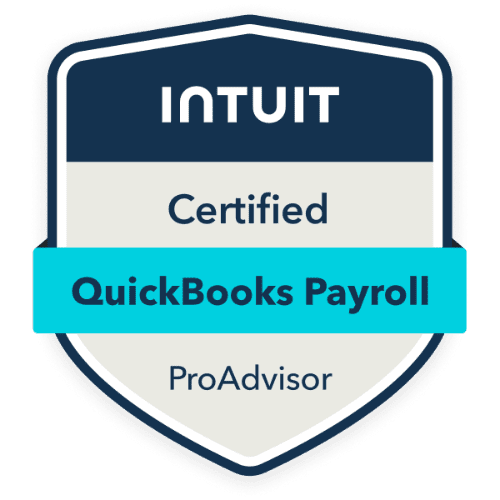Ready to make the exciting leap from solopreneur to employer? Most small business owners face this decision within their first few years of operation. Hiring your first employee opens doors to incredible growth opportunities, but the new employer responsibilities can feel overwhelming without the right approach. Here’s everything you need to know about when it’s time to expand your team and how to handle small business payroll like a pro.
When You Know It’s Time to Hire Your First Employee
The decision to transition from solo business owner to employer shouldn’t be taken lightly, but clear signals indicate when you’re ready for this small business growth milestone:
Before you start the hiring process, identify exactly which tasks consume most of your time. Administrative work, customer service, data entry, or routine operational tasks are often perfect starting points for new employers.
Employee vs. Contractor: Making the Right Choice
Consider whether you actually need a full-time employee or if outsourcing to freelancers or independent contractors might better suit your current business needs. Contractors offer flexibility without the commitment of employer payroll taxes, workers’ compensation insurance, and employment law compliance.
However, be careful about worker classification rules. The IRS and Department of Labor have strict guidelines about who qualifies as an independent contractor versus an employee. Misclassification can result in significant penalties, back taxes, and legal issues that could seriously impact your business.
Choosing the Right Payroll Solution for Small Business
Once you’ve decided to hire, payroll processing becomes your new reality. This is typically when panic sets in, but modern payroll software makes this completely manageable for first-time employers.
Top Payroll Software Options
Gusto is the top choice for new employers and small business payroll management. It handles all tax calculations automatically, files your payroll taxes, and offers excellent customer support when you’re learning employer responsibilities. Their clean interface makes payroll processing straightforward, and they can help with benefits administration as you grow. Pricing starts around $49/month plus $6 per employee.
QuickBooks Payroll integrates seamlessly if you’re already using QuickBooks for small business accounting. You can run payroll directly from your accounting software, making financial management more streamlined. Expect to pay approximately $50/month plus $6 per employee.
ADP Run offers robust features for businesses planning rapid growth, though it’s pricier for very small teams. Their customer service and payroll compliance support are exceptional.
Essential Insurance and Employment Law Compliance Requirements
Before your first employee starts, you’ll need to establish several key protections and processes that all employers must follow:
Required Insurance:
1. Workers’ compensation insurance (required in most states, even for one employee)
2. State unemployment insurance (SUTA) registration and contributions
3. Employment Practices Liability Insurance (EPLI) – highly recommended to protect against wrongful termination, discrimination, or harassment claims
legal compliance essentials:
1. Obtain an Employer Identification Number (EIN) from the IRS for tax purposes
2. Register with your state’s labor department for new employer requirements
3. Set up required tax accounts (federal, state, and local)
4. Collect Form I-9 for employment eligibility verification
5. Have employees complete Form W-4 for payroll tax withholding
6. Post required labor law notices in your workplace
7. Establish written policies for overtime pay (time-and-a-half for non-exempt employees after 40 hours), sick leave, and vacation time
8. Create an employee handbook covering workplace policies, expectations, and procedures
*Each state has different requirements for new employers, so check with your local Department of Labor or consult with an employment attorney or accountant to ensure full compliance with employment laws.
Setting Up Your Small Business Payroll Process
Establish a Consistent Payroll Schedule
Most small businesses choose either bi-weekly payroll (26 pay periods per year) or semi-monthly (24 pay periods per year) schedules.
Whatever you choose, consistency is crucial for employee satisfaction and cash flow management. Your employees need to know exactly when they’ll be paid, and you need to plan your business finances accordingly.
Maintain Detailed Records
Document everything meticulously:
1. Hours worked (including start/stop times)
2. Overtime hours and rates
3. Sick days and vacation time used
4. Any deductions or reimbursements
5. Tax withholdings and payments
These records protect both you and your employees while ensuring you’re prepared for tax filings and potential audits.
Understanding Your Employer Tax Obligations
As a new employer, you’re responsible for several types of payroll taxes and reporting:
Federal Income Tax withholding: Based on employee W-4 forms and IRS withholding tables.
FICA taxes (Social Security and Medicare): You pay 7.65% and withhold another 7.65% from employee wages.
Federal Unemployment Tax (FUTA): 6% on the first $7,000 of each employee’s wages, but most employers pay only 0.6% after receiving a 5.4% credit for timely state unemployment tax payments
State Unemployment Tax (SUTA): rates vary significantly by state and your claims history as an employer
Workers’ compensation premiums: rates depend on your industry classification and safety record
State and local taxes – some states and cities require additional withholdings
Your First Employee Hiring Checklist
Before You Start the Hiring Process:
New Employer Setup Requirements:
First Day Preparation:
Common First-Time Employer Mistakes to Avoid
Underestimating total employee costs: Budget for salary plus 25-40% additional for employer taxes, insurance, and benefits.
Skipping the employee handbook: Even with one employee, clear written policies protect your business from employment law issues.
Inadequate employee onboarding: A structured first week sets expectations and builds confidence in your new hire.
Mixing personal and business expenses: Keep all employee-related costs clearly separated for tax purposes and business accounting.
Frequently Asked Questions
Ready to Take the Next Step?
Hiring your first employee is an exciting small business milestone that signals real growth and opens doors to new opportunities. While becoming an employer involves new responsibilities, proper planning and the right payroll systems make it entirely manageable.
Take your time to find the right person who aligns with your company values and vision. Set up robust systems from day one, and don’t hesitate to seek professional guidance when navigating employment law requirements.
Ready to hire but feeling overwhelmed by the payroll setup details? Schedule a consultation call to discuss your hiring timeline, small business payroll strategy, and compliance requirements. We’re here to help you navigate this exciting transition with confidence.
LET’S CONNECT
Need a bookkeeping partner who makes things easy?
Bookkeeping isn’t just about paperwork. It’s about power. When you understand your numbers, you’re in control of your business’s future. Stay organized, plan ahead, and don’t be afraid to get help when you need it.
Get in touch today, and let’s get your books in order! Book a free call to discovery how I can save you time and money.
This blog post is intended for informational and educational purposes only and should not be construed as financial, tax, or legal advice. Every business situation is unique, and tax laws and regulations are subject to frequent changes. Please consult with a qualified accountant, tax professional, or attorney before making decisions about your business structure or bookkeeping practices. The information provided here is based on current understanding at the time of publication and may not reflect the most recent changes in tax law or regulations.















